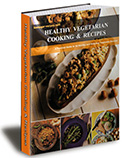A pizza is the sum of its parts; namely, the pizza crust, the pizza toppings and the pizza sauce. Make every one as glorious as you can make it and you may be 100% sure of turning out the best home-made pizza possible. Try out the following secrets when you make your homemade pizza.
Pizza Crust Secrets
Bake your pizza crust separately: It'd be best if you can heat your pizza crust first before you add on the toppings and sauce. There’s one sound reason for doing this. If you cook the lot at one and the same time, you'll finish up with a pizza which has overcooked toppings, burnt cheese and an undercooked, flat crust. Of course, you shouldn't bake your crust entirely the first time so that you will not finish up with a pizza that's got a burnt crust after your last baking stage.
Mixing pizza dough ingredients: Begin by putting in a bowl at least one-tenth of the warm water cited in your homemade pizza recipe. Add yeast continuously to the water, stir and let it stand for a couple of minutes. Meanwhile, in a fresh bowl, put the leftover hot water, stir in the sugar and salt (if your recipe specifies these ingredients) and the other dry ingredients except the flour, add the water and yeast mixture, stir the lot then immediately add the rest of the ingredients.
Kneading the pizza mixture: Kneading will let air mix with your pizza dough blend. You must knead the pizza dough only until it reaches the correct consistency: the dough does not stick to the container and individual portions can be stretched without breaking. Over-kneading will result in brittle pizza dough. While kneading the dough, use flour to prevent the mixture from sticking to your hands and the bowl, but use as little flour as practical.
Let your pizza dough rise before using it: After kneading your pizza dough, you have to give it sufficient time to rise to your required thickness. Typically, the longer the fermentation time you permit your pizza, the better the flavor of the pizza crust. Nevertheless watch out not to use too much yeast if you are going to let the dough rise for hours (say you prepared the dough in the morning and let it relax for the remainder of the day in preparation for baking by day end). Red ink Pizza
If speed is of the essence: If you want the pizza dough as quickly as possible , you can let it rise quicker by adding more yeast to the mixture or by inflating the temperature of the dough. To do the second, you can heat your range for a few minutes, turn it off, cool the oven off a bit by leaving the stove door open for one or two seconds, put the dough in a covered bowl, put the bowl in the cooker and close the door. Let the mix stay in the warm stove for no less than 30 minutes, take it out, softly press the dough down then repeat the “rising” exercise for another 30 minutes. Another strategy that you can apply for a faster fermentation period is to utilise lukewarm water. The bigger the water temperature, the faster yeast action will be. Just a note of caution nonetheless , the pizza dough that has been permitted to ferment longer using minimum amount of yeast generally results into a better-tasting pizza crust so it’s best that you mix and knead your dough hours before you really need it.
Frozen home made pizza dough preparation: If you have prepared pizza dough the night before and left it in the fridge for next day’s baking, take it out in the morning and let it rise for no less than several hours before you use it. Again, the less the yeast used, the longer the rising period needed.
To make a thin pizza crust: If you are aiming for a thin crust pizza, you'll need to use less dough per pan. You may just stretch your pizza dough more on the pan. Doing this will naturally cut back the crust thickness.
To get a thick pizza crust: For a thicker crust, you need to utilise a pizza pan with a smaller rim, use more pizza dough per pan or stretch out the dough less. The result would be increased crust thickness.
To get a crispy pizza crust: For a crispy pizza crust, it would be best if you cut back the amount of water. Drier pizza dough usually means a crispier pizza crust. Stiffer pizza dough also suggests crispier crust so it would be best to use flour with high gluten content if you need a crispy crust.
For a soft and gooey crust: To get a soft and chewy crust, you need to add more water to your dough blend or use less flour. More moist pizza dough means softer pizza crust. To achieve better results, use flour with low gluten content. You'll make gluten-free pizza dough by using gluten-free flour
If you live in a high-altitude location: Be mindful of the results of. High altitude on pizza dough. A higher altitude means less air pressure so the dough will rise faster, and it suggests a faster rate of evaporation so that the dough will dry out quicker. So, if you're in a high-altitude location, it is generally a good idea to use more water and less yeast in your pizza dough mixture than you would typically use if you were in a low-altitude location.
Need to discover more about St Kilda Pizza, then visit Duncan Bakshmidt’s site on the way to choose the best St Kilda Pizza in the town.
Tags: cafe st kilda, pizza home delivery, pizza order, st kilda pizza
